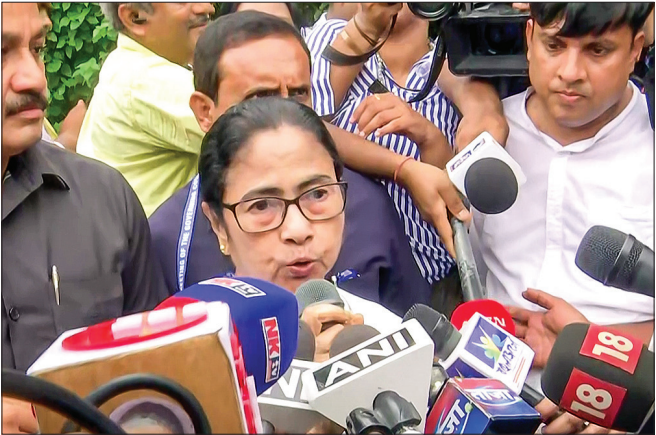NEW DELHI: On two occasions recently the Bengal Chief Minister has challenged Rahul’s position as LoP.
The meeting of Niti Aayog held on Saturday witnessed participation of TMC leader and Bengal Chief Minister Mamata Banerjee, raising several
Mamata Banerjee, whio too is supposed to be a part of I.N.D.I competes against Congress in her own state and has shown resistance to Rahul Gandhi’s leadership. This has given rise to the question about the possible formation of a third front. On two occasions after the 18th Lok Sabha was formed, Mamata Banerjee challenged Rahul Gandhi’s position as the Leader of Opposition. The first instance was during the Lok Sabha Speaker’s election.
While Rahul Gandhi pushed for a division of votes, Mamata Banerjee opted for a voice vote, which Congress had to accept. Reports suggest that Mamata was opposed to the Speaker’s election, but it proceeded due to Rahul’s insistence. She later claimed that the decision was made without her consultation. And then, following the budget, Congress declared that its Chief Ministers and those from alliance parties would skip the Niti Aayog meeting. But Mamata Banerjee attended the meeting despite Congress’ expectations.
Following its victory on 99 seats, Congress is acting as though it is the dominant force, a stance that seems to be alienating its allies and the government. Mamata Banerjee is resisting Rahul Gandhi’s leadership. The TMC holds 30 seats in the Lok Sabha and 11 in the Rajya Sabha. It is also notable that Mamata Banerjee chose not to meet Congress leader Sonia Gandhi during her visit to Delhi. This move indicates her intention to distance herself from Congress leaders, suggesting a deliberate downplaying of Congress’ influence.
Mamata Banerjee appears to be orchestrating a political realignment, aiming to bring together non-Congress and non-BJP parties. On July 21, Banerjee invited Samajwadi Party leader Akhilesh Yadav, a key member of the I.N.D.I Alliance, to Kolkata. She also reached out to the AAP and Jharkhand Mukti Morcha. Despite Akhilesh’s current alignment with I.N.D.I Alliance, he is apparently wary of Congress’ tactics, which he believes could be detrimental for his political ambitions. Chandrashekhar Azad of the Azad Party is also gaining traction in Uttar Pradesh.
With upcoming elections in Haryana, Maharashtra, and Jharkhand, the Samajwadi Party is seeking a stake in all three states, a demand Congress may not meet. In response, Mamata Banerjee could potentially form a third front, bringing together the SP and AAP to contest these elections. AAP is already preparing for the Haryana polls, with Sunita Kejriwal actively campaigning, and will also contest in Maharashtra. These parties recognize that a strong Congress could increase their challenges.
Additionally, Y.S. Jagan Mohan Reddy’s YSR Congress might align with this coalition. Hence, Mamata Banerjee is potentially playing a significant role in shaping the new landscape.

